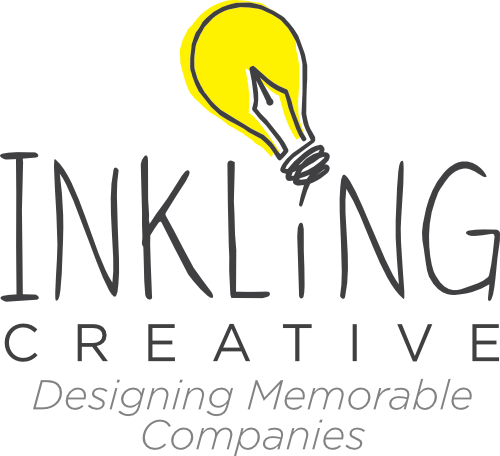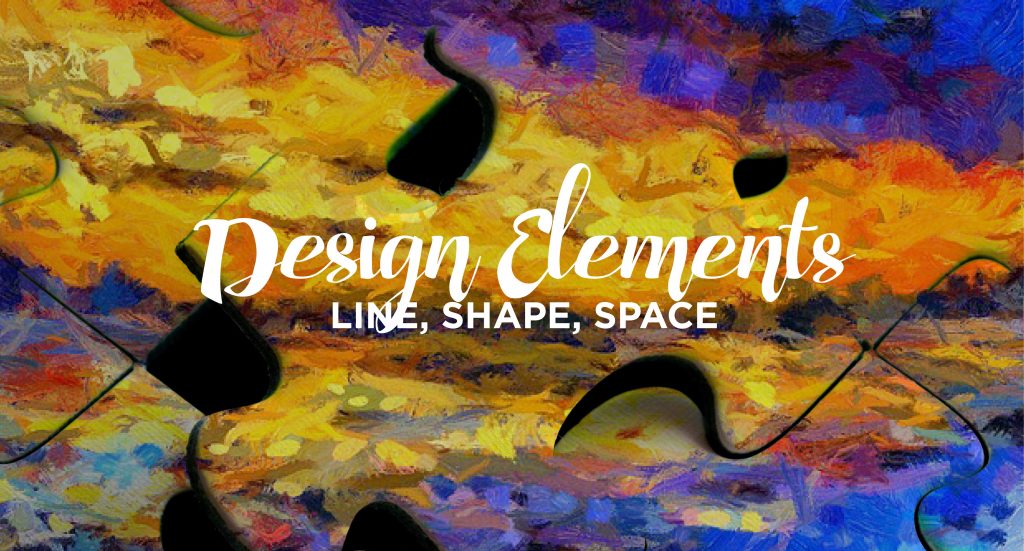The periodic table? The weather? A frozen yogurt shoppe? No, not these elements, but elements of design. As previously discussed, an element of design is one of the constituent parts of a design that makes up the whole. An element is a one of the units that make up a design. We discussed how the basic elements can be boiled down to five main categories. Those categories are balance, proportion, emphasis, movement, unity, and variety. This journal entry will cover three of those in more depth: line, shape, and space.
More...
Line
Something as simple as a line can be very communicative. We learn in geometry class that a line is what connects two points.
In design, we can be a bit more descriptive. A line can be straight or curved, thin or thick, expressive or controlled, delicate or bold. The nature of a line itself can be very evocative. The type of line or lines used should be carefully considered depending on the mood you want to convey. For example, a horizontal line conjures up images of a still horizon or a person resting or lying down. As such, a horizontal line implies quiet or rest.
A vertical line is much of what a horizontal line is not. A vertical line evokes images of skyscrapers or people standing upright and tall. Vertical lines are stalwart and aspiring, and so suggest much potential for action. Because of this, vertical lines are much more energetic than their horizontal counterparts.
Even more dynamic than vertical lines are diagonal lines. They are like bolts of lightning or people leaning forward, ready to burst forth into an explosion of movement. Of the straight lines, diagonal lines are the liveliest. Curved lines also create movement and motion, but they do so in a different way.
As you can see, lines can be quite expressive. It must be noted however, that not all lines are “actual lines.” That is, not all lines actually exist. Some lines are implied.
Think of those “connect the dots” activities you did as a child. Depending on the difficulty of the page, you could sometimes tell what the image was supposed to be. Another implied line is that which is called a “psychic line.” These lines are almost imaginary lines.
An example of this is when someone is looking in a specific direction or when someone is pointing at something. There could be a line connecting the two objects, but there is not. It is a line created by your mind.
Shape
A second element of design is shape. A shape is what we call two-dimensional. It has width and height, but it has no depth or volume as a three-dimensional object does. (Think square versus cube.) A shape can be rectilinear (with straight edges and angular corners) or curvilinear (with curved edges and/or rounded corners).
Geometric shapes are our standard shapes such as circles, squares, or triangles. These shapes generally have mathematical formulas to determine the area or size. They are very precise with straight edges or consistent curves.
Not all shapes are geometric shapes. Shapes such as palm fronds, flower petals, or a tree branches are called natural, or organic, shapes. They are not as precise or consistent as geometric shapes. A different kind of shape that has been simplified or changed to reflect the essence of a natural shape is called an abstract, or stylized shape. If you hear of “economy” in design, it refers to “stripping down visuals to fundamental forms,” which is another description for stylizing a shape.
One category beyond geometric, natural, abstract, and stylized shapes is those shapes that are called non-objective or nonrepresentational. These are the shapes that are created with no reference to any subject, but only that which we imagine.
Space
A third element of design, that many consider a principle, is space. I consider it an element because space, or how you use space, is one of the essential “building blocks” of any piece of art.
Positive space is the actual existence of an objective or shape and the position of various objects. Negative space is the space around the positive space. Sometimes, negative space is used to create a shape, like in the FedEx logo.

As we learn more about design and how to improve art, we have seen that we need to first understand what it is that a design consists of. Today we covered three of the foundational elements of any piece of art: line, shape, and space. In the next post we will finish up the elements of design and cover two elements that give a piece of art some of the most interest and character: color and texture.

